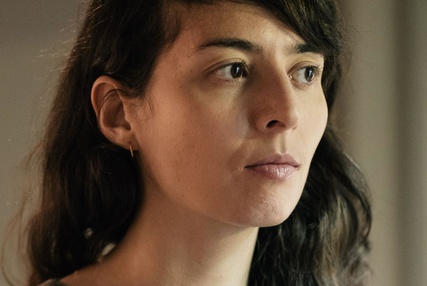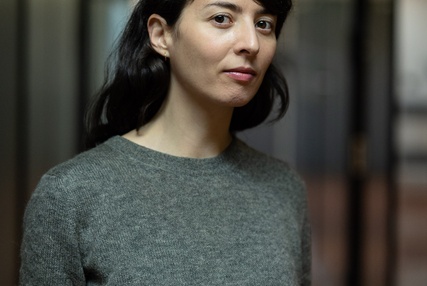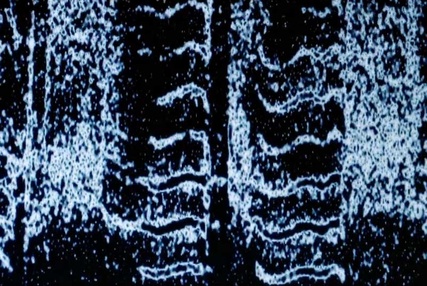On l’a dit, Judith Deschamps est artiste plasticienne. Lorsqu’elle s’intéresse à la figure de Farinelli et à l’air Quell’usignolo che innamorato que le castrat a chanté tous les soirs au roi d’Espagne pendant des années pour vaincre sa mélancolie, elle éprouve donc le besoin de s’entourer de musicien·ne·s. Parmi les premier·ère·s à travailler avec elle – et qui participe encore aujourd’hui activement au projet de recherche artistique à l’Ircam –, le compositeur et contre-ténor António Sá-Dantas. Entretien.
António Sá-Dantas, comment avez-vous rencontré Judith Deschamps et comment en êtes-vous venu à participer à son projet ?
J’ai rencontré Judith voilà quatre ans, et c’était déjà autour de la figure de Farinelli et de l’aria Quell’usignolo che innamorato de Geminiano Giacomelli. Le premier avatar de ce projet au long cours était en effet une installation faisant intervenir une performance live de chanteur·se·s. Judith avait lancé un appel, auquel j’ai répondu, étant moi-même contre-ténor et fasciné par le personnage de Farinelli.
Lors de notre première entrevue, nous avons bien sûr parlé de ce qu’il y avait à chanter, mais aussi du visuel de la partition – car cette dernière était un élément central de l’installation. Étant également compositeur, nous avons échangé sur la manière dont on pouvait modifier visuellement la partition pour refléter l’ambitus extrême et la virtuosité technique de Farinelli. Nous avons par exemple ajouté des lignes aux portées, fait l’impasse sur les clefs, mais aussi joué sur un dégradé de gris pour le corps des notes.
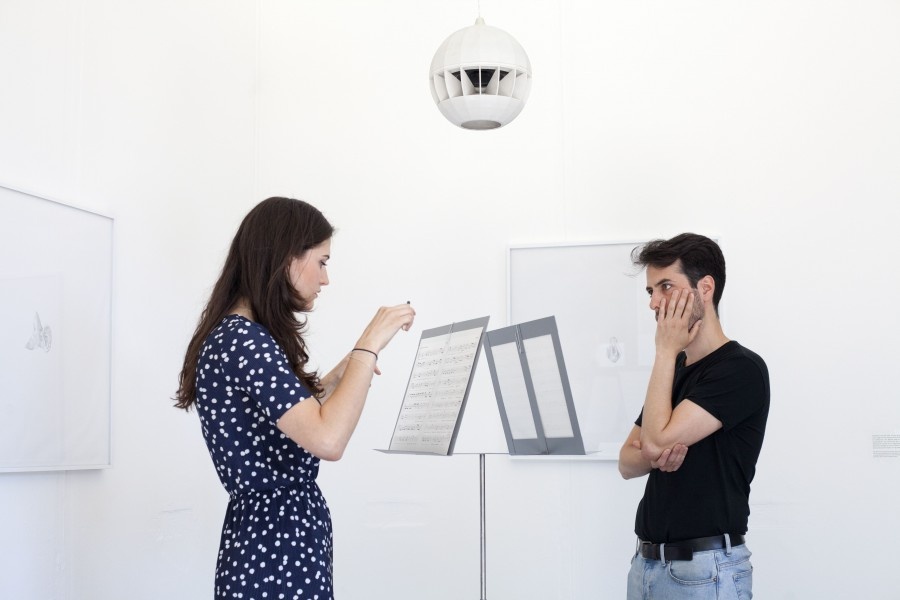 Performance avec Ana Beard Fernandez et Antonio Breitenfeld Sa-Dantas, Royal College of Art, 2018 © Judith Deschamps
Performance avec Ana Beard Fernandez et Antonio Breitenfeld Sa-Dantas, Royal College of Art, 2018 © Judith Deschamps
Qu’est-ce qui vous séduisait dans ce projet ?
D’abord la figure de Farinelli, que je trouve passionnante, du point de vue à la fois de l’ambiguïté de genre et des formidables capacités musicales. Mais j’ai aussi été séduit par l’approche belle et touchante de Judith, et l’emphase qu’elle met sur la relation du castrat avec le roi d’Espagne – ce rituel musical devenant thérapeutique, voire cathartique, face à la « mélancolie » de Philippe V. Enfin, la relation aux nouvelles technologies a fini d’emporter mon enthousiasme. Nous sommes là dans un véritable « sweet spot », où se retrouvent le musical, le vocal, la santé mentale et l’apprentissage profond – une technologie à laquelle on demande aujourd’hui si souvent de venir pallier nos difficultés, justement.
Cette collaboration s’est rapidement muée en amitié, et est devenue pour moi une opportunité de me nourrir au contact d’une grande artiste. Au fil des années, après avoir chanté pour elle, et après avoir joué les consultants sur le visuel de la partition, j’ai voulu m’impliquer de plus en plus, en participant au développement du projet à l’Ircam.
C’est-à-dire ?
Lorsque Judith a commencé son travail de recherche à l’Ircam, il a fallu retravailler la partition pour mettre en valeur les capacités propres à chacun·e des chanteur·se·s impliqué·e·s et à leurs ambitus – et adapter leurs parties à cet exercice si particulier qu’exigeaient les contraintes du système technologique développé à l’Ircam, mais sans jamais perdre le sentiment de l’idiome baroque.
Mon bagage de contre-ténor et de compositeur a alors été précieux pour comprendre ce qui était en jeu, tenter de donner une cohérence musicale au projet, mais aussi pour traduire la pensée de Judith au travers de la partition, de l’instrumentation et l’ornementation.
La découverte d’une partition de l’aria de Giacomelli, envoyée à l’impératrice d’Autriche et annotée de la main de Farinelli, a rendu mon travail plus passionnant encore ! Farinelli avait lui-même reporté (en couleur) sur la partition ses propres ornementations, principalement dans les réexpositions du thème et dans les cadences. C’est un document rare car il n’était pas dans les habitudes des musiciens de l’époque de noter leurs ornementations : par principe, on les improvisait, on ne les écrivait pas. Ce document est aussi particulièrement intéressant, car il permet de constater l’ambitus de Farinelli à cette période de sa vie (qui couvrait environ deux octaves d’après ce qu’il écrit – avec l’âge, les castrats perdaient de leurs aigus).
Cette découverte m’a conduit à revoir l’aria pour l’adapter (avec ses ornementations) aux chanteur·se·s impliqué·e·s dans le projet – et mon travail a consisté à élargir encore les deux octaves de registre de Farinelli à près de trois octaves (en ajoutant les aigus qu’il pouvait atteindre lorsqu’il était plus jeune), pour exploiter au mieux les ambitus de tous les chanteur·se·s.
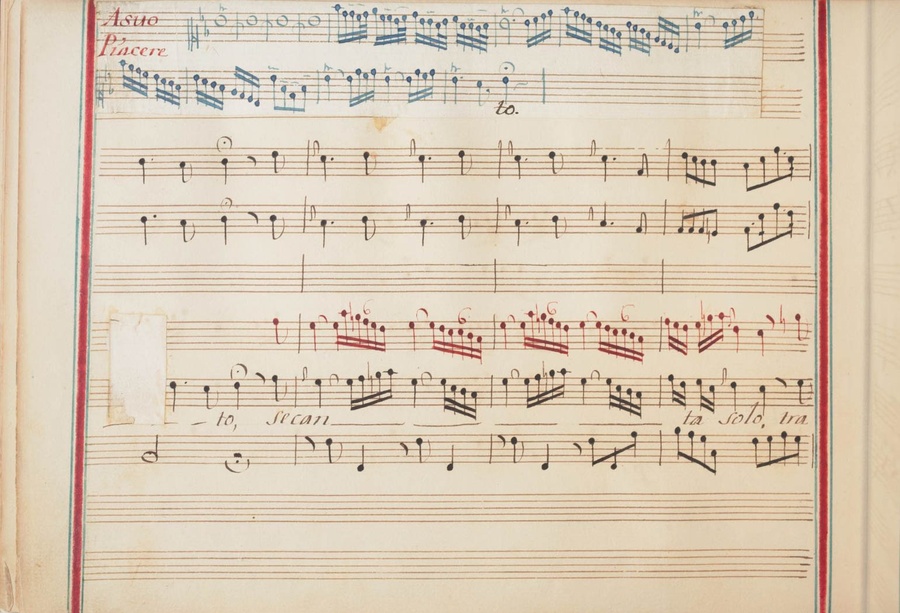 Extrait de partition Quell’usignolo che innamorato
Extrait de partition Quell’usignolo che innamorato
Comment avez-vous approché ce travail d’écriture, sachant que son résultat servirait à l’apprentissage profond d’une intelligence artificielle ?
L’algorithme, développé par Frederik Bous et Axel Roebel, ne « reconstitue » pas à proprement parler l’aria telle que chantée par Farinelli. Il se fonde sur tous les enregistrements dont on le nourrit pour transposer la hauteur des parties du chant que la voix alto – qui sert de base à cette recréation – ne peut atteindre naturellement. D’où la nécessité d’être très rigoureux dans la réécriture.
C’est d’autant plus complexe que les chanteur·se·s chantent a capella, sans ensemble, mais doivent quand même s’impliquer pleinement, avec le tempo, l’énergie, etc. Il faut aussi tenir compte des contraintes de l’enregistrement et, éventuellement, des montages qu’il faudra réaliser sur chacune des propositions des chanteur·se·s. J’ai alors aidé Judith à la direction artistique de ces enregistrements. En particulier ceux de la voix d’alto, qui, augmentée par l’IA, sert de fil rouge à la « recréation » de l’aria.
Où en êtes-vous de ce travail ?
Après avoir réussi à recréer une première version de l’aria, nous nous attelons à une nouvelle extension du projet. Judith a en effet prévu de présenter ce travail à nouveau sous la forme d’une installation sonore, et l’idée est qu’un programme puisse recréer librement, et en continu, de nouvelles versions de l’aria. Non plus simplement avec une voix qui suivrait la partition comme un interprète « normal », mais en recomposant de manière autonome la pièce – en n’agissant plus simplement sur la voix ou les ornementations, mais jusque sur la structure même du chant. Les auditeur·rices·s pourront ainsi écouter une pièce inlassablement différente, et pourtant toujours la même.
Cela renvoie, là encore, au rituel vespéral de Farinelli et du roi d’Espagne : Farinelli chantait tous les soirs, c’était donc comme une chanson infinie, et il est peu probable qu’il chantait exactement de la même manière chaque soir. C’est encore un développement passionnant imaginé par Judith.
Propos recueillis par Jérémie Szpirglas



